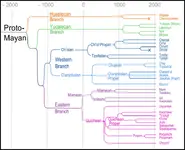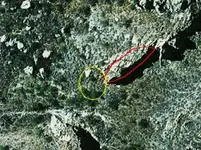The Maya did not perceive combat as a clash of people and weapons alone, but rather as a complex confrontation of spiritual and material forces. When Pedro de Alvarado, engaged the forces of the K'iche' Maya culture hero Tecún Umán in February 22, 1524, the Maya lord and his companions flew at him in the guise of eagles and lightening, according to native accounts, only to be defeated by the Spaniards superior spiritual forces in the form of "footless birds", holy ghosts, and a "floating maiden", the Virgin.
The Mayan Version:
At midnight the Indians went to Xel'juh, and the captain of the Indians who had transformed himself into an eagle became anxious to kill the Adelantado Tunathiú [Alvarado] and he could not kill him because a very fair maiden defended him; they were anxious to enter, but as soon as they saw this maiden they fell to the earth and they could not get up from the ground, and then came many footless birds, and those birds had surrounded the maiden, and the Indians wanted to kill the maiden and those footless birds defended her and blinded them." The attackers were paralyzed and blinded by the "Way'ob" of the Spanish [the Virgin Mary and the Holy Spirit or perhaps angels who looked to them like footless birds].
The next day, I Q'anel in the Maya calendar, Tecún Umán himself came against the Spanish in his eagle "Way". "And then Captain Tecún flew up, he came like an eagle full of real feathers, which were not artificial; he wore wings which also sprang from his body and he wore three crowns, one was of gold, another of pearls and another of diamonds and emeralds." Tecún Umán went forward with the intention of killing Alvarado and thus defeating the battle beasts and the way of the Spanish. He struck at the great man-beast with all his power, hitting Alvarado's horse and taking its head off in a single blow. According to the K'iche, his lance was not made of metal, but of shiny stone which had a magic spell on it. When Tecún realized he had killed only the battle beast and not the man, he flew upward and came at Alvarado. The Spaniard was ready and impaled the charging king on his lance.






 I doubt that it will ever be considered as a separate language, similar to Pidgin English as spoken in Micronesia. My word, "You likem long Mary Kai Kai ??
I doubt that it will ever be considered as a separate language, similar to Pidgin English as spoken in Micronesia. My word, "You likem long Mary Kai Kai ??

